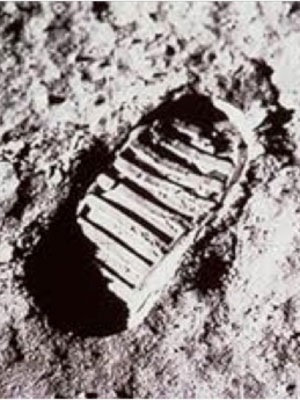By Dr. Jim Rice
Dr. Jim Rice is an Astrogeologist working at NASA Goddard Space Flight Center. For the 2010 Desert Rats field test, Dr. Rice will be the geology crew member on rover A in week one, as well as a member of the science backroom for week 2.
Our field site here in northern Arizona allows one to contemplate our human origins and destiny in a very unique way. Now, allow me to explain. The Black Point Lava Flow, where Chris and I started our 7-day mission in Rover Alpha, is 2 million years old. 2 million years is an interesting number in terms of human origins. While the Black Point Lava Flow was being born and flowing as a river of molten rock and fire, our early ancestors, Homo Erectus, were learning to fashion tools out of rock (some were made of basalt – the very same rock type that is at Black Point) and harness fire for the first time in Africa, the cradle of mankind. This date of 2 million years ago also records the first migration of our ancient ancestors out of Africa and into what is now Europe and Asia.
Now, moving on to another prominent lava flow for this year’s field test, we come to the lava flow from SP Mountain. This flow is 70,000 years old and while this eruption was taking place, halfway around the globe a much larger massive super volcanic eruption was occurring at Toba, in what is present-day Indonesia. This was one of the largest eruptions known in the geologic record. Its prestigious amounts of ash combined with an already present Ice Age contributed to further cooling the planet down. At the same time, the human population had decreased to a dangerously low level of between only 1,000 to 10,000 people worldwide. Modern humans at this time started another mass migration out of Africa that eventually led to the spread of humans across the whole globe that we recognize today.
Flash forward to today, where we are now conducting a manned Planetary Rover field test. It is also interesting to note that the earliest human footprints are recorded and preserved in a layer of volcanic ash, and the Apollo astronauts’ bootprints are also preserved in the volcanic plains of the moon (see photos below). The human race is now on the brink of another major migration – this time it is into the cosmos. I have no doubt that Desert RATS with everyone’s hard labor and long hours is setting the stage for this, the greatest of all human migrations out among the stars.

Photo of the earliest human footprint recorded in volcanic ash.

Photo of the first human footprint in lunar soil.

Hi,
This was intrested indeed but I will be more happy when the hummans actualy migrate on other planets or even the moon is ok.
I allway dream that I make part from nasa and I do intresting discovers 🙂
Regards,
hi thanks for the very interesting read about human antropology and you had the good point human setlement will beyond other galaxies as well in history people always talks about 1000a years or million years well
really it was nice travel in my mind to see far future .
have a nice works and look for to read other subjects to read..
I saw above photos, really the footprint is too big, I want to ask you, can you calculate, what was the height of that human?
Noman Ahmed ( )
OMG…..you don’t really call what you guys do “work” do you? (LOL!)
You’re having toooo much fun! Where do I sign up!
There should be doctorates handed out for wood chemistry…(wood stabilization is the polymerization of wood), but no, they give them to you guys blasting around the Arizona desert in your dune buggies! (I’m envious..!)
Michael Rytter
Hi this is dolly and I know that 2 million years ago, Black Point Lava Flow was formed, and ancestors of early humans were learning to use tools and migrating around the world. Today, NASA researchers conduct field tests to prepare for the next migration: into the cosmos.
===
Hi let nasa will have grandiously gotta big discoveries
thanks